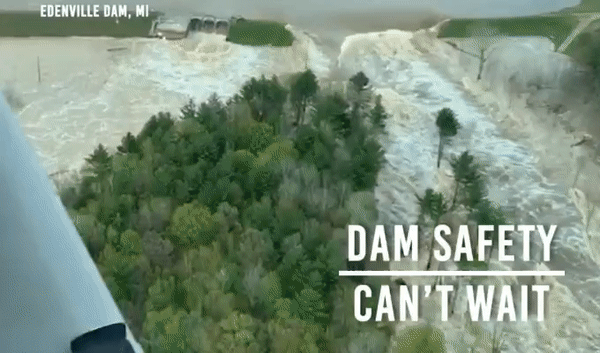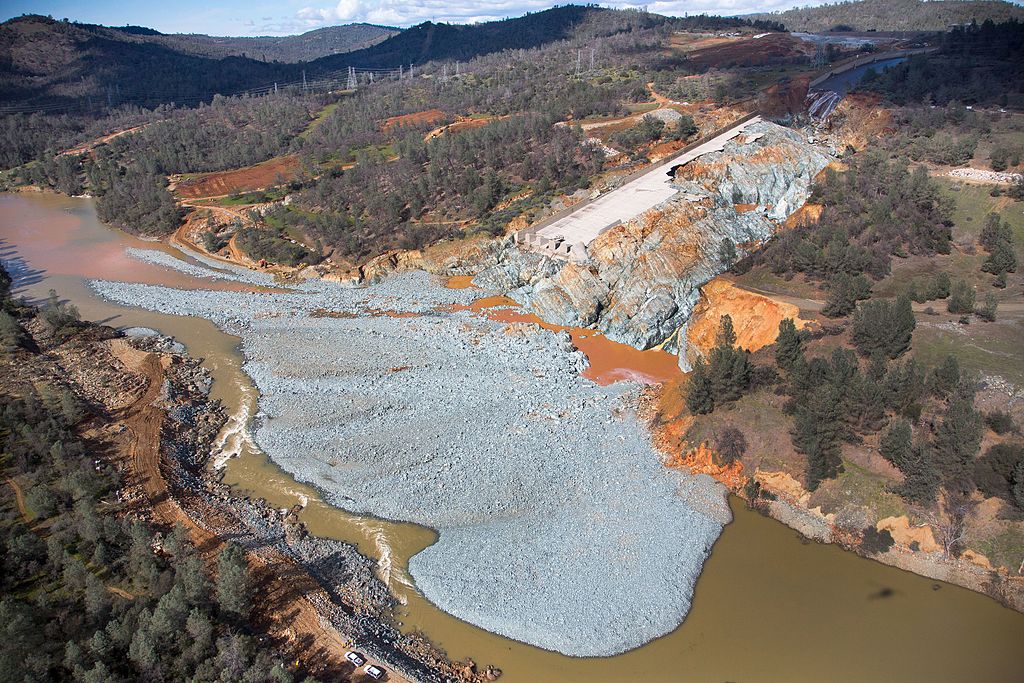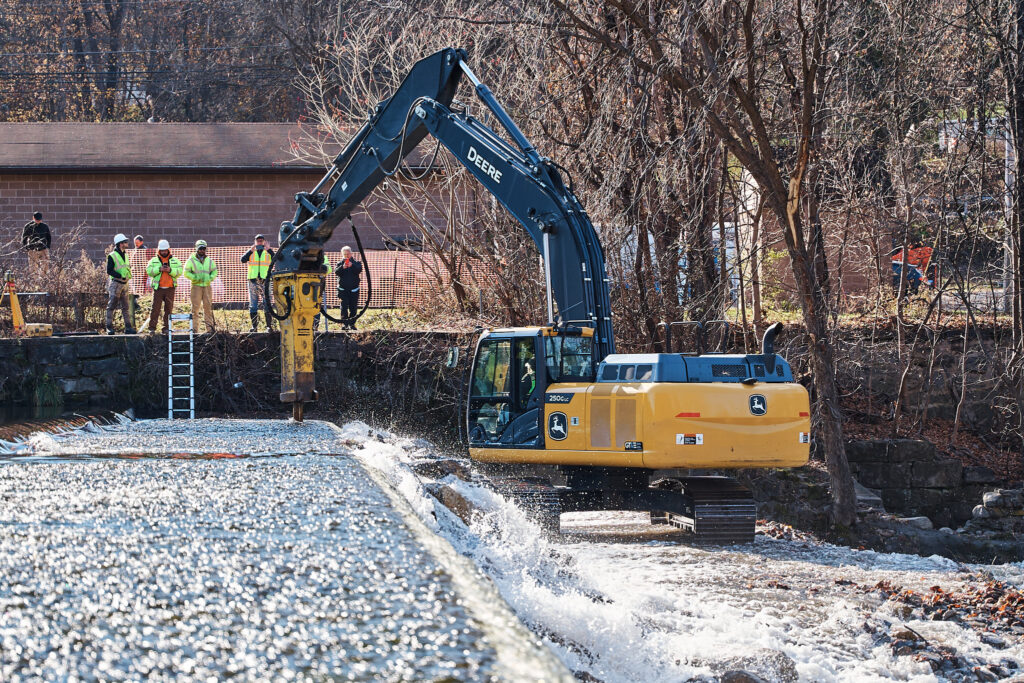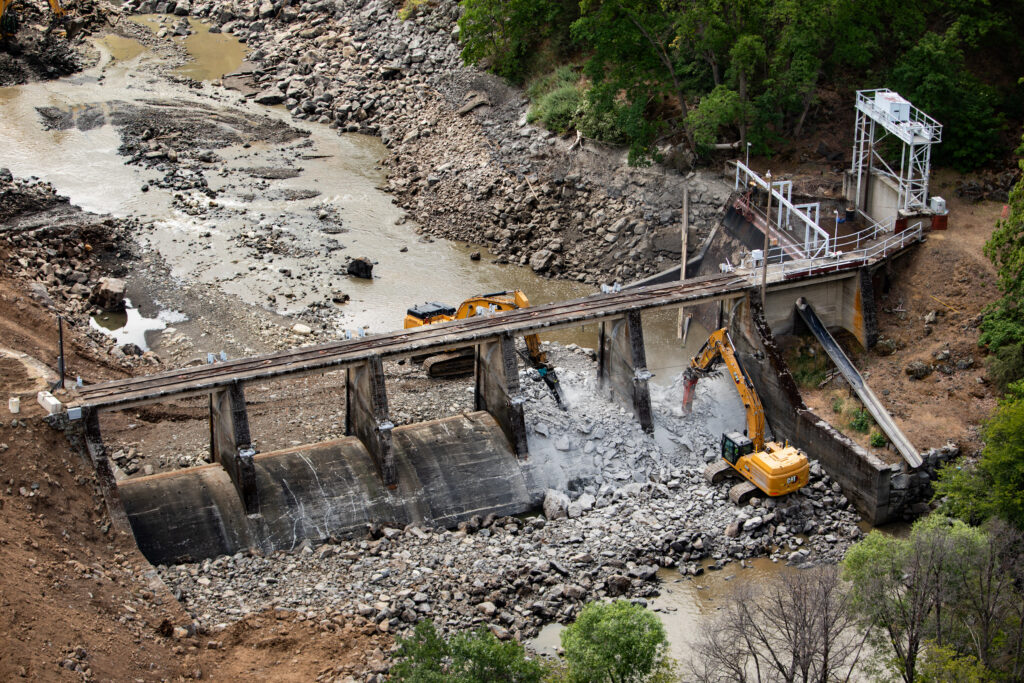A big dam problem: The disaster in Michigan and solutions for the future
A dam failure and a flood, in the middle of a global pandemic: it’s a worst-case scenario.

A dam failed in Michigan yesterday, forcing thousands of residents to evacuate their homes. The Edenville Dam, which failed, and the Sanford Dam, which was compromised, are on the Tittabawassee River, a tributary of the Saginaw River. The failures followed days of heavy rainfall and sent floodwaters into downstream communities. Residents of Edenville, Midland and Sanford were evacuated.
A dam failure and a flood, in the middle of a global pandemic: it’s a worst-case scenario. The immediate focus needs to be protecting public health and safety. Governor Whitmer encouraged people to seek shelter with friends or relatives, and to take precautions to prevent the spread of coronavirus.
How did this happen?
Why did these particular dams fail? Was it because of heavy rains? Climate change? Faulty, aging infrastructure? Lack of action by the dam owner? Right now, we know the following:
- The Edenville Dam was plagued by concerns and safety violations. The Federal Energy Regulatory Commission revoked its hydropower license in 2018 due to concerns that the dam could not withstand a significant flood. FERC flagged problems for the dam’s owner starting in 1999.
- Climate change is bringing more severe and frequent flooding at a time when our nation’s infrastructure is aging and outdated.
- The American Society of Civil Engineers has repeatedly given our nation’s dams a grade of D in their “Report Card for America’s Infrastructure” – citing age, downstream development, dam abandonment and lack of funding for dam safety programs. More dams will fail, endangering people and property, unless we act to repair essential infrastructure and remove dams that no longer make sense. The Association of State Dam Safety Officials estimates there are more than 2,000 high-hazard dams nationwide in deficient condition.
- The dam failure in Michigan isn’t the first “wake up call” when it comes to the need to address aging infrastructure. Dozens of dams failed in the Carolinas five years ago; thousands of residents were evacuated due to the partial failure of nation’s tallest dam, Oroville Dam on the Feather River, three years ago; and last year the Spencer Dam failed in Nebraska forcing evacuations. These disasters aren’t specific to one region, they are impacting communities nationwide.

Dale Kolke, CA DWR
While we’re still learning about the specifics of this disaster which is still unfolding in Michigan, the following three actions are necessary to protect communities in the future:
- Increase, don’t decrease, public safety and environmental safeguards – The safety of federally licensed hydropower dams is overseen by FERC. While FERC revoked the dam’s license in 2018 due to safety concerns, that clearly was not enough to prevent this week’s catastrophe. Moreover, on the same day the dams failed, President Trump signed a new executive order to roll back more regulations under the guise of restarting the economy. Further gutting the regulations that safeguard human lives and safety and protect the environment is the wrong way to produce a sustainable economic recovery.
- Strengthen evaluation and enforcement – Michigan has a working dam safety program. Even so, state dam safety offices are historically underfunded with a limited number of staff responsible for inspecting thousands of dams. We must improve these efforts by making it the responsibility of dam owners to inspect and maintain their dams; requiring more frequent, detailed inspections of deficient dams and increasing penalties for unsafe dams and violations; and, requiring dam owners to ensure that funds are available to repair or remove dams in the event they can’t or won’t meet safety standards. As communities continue to grow and development expands, many dams may also be misclassified as infrastructure and development increases downstream.
- Increase funding for dam removal and water infrastructure – Dam removal can be the best way to address a dam that poses a safety risk. There are tens of thousands of dams across the country that no longer serve the purpose they were built to provide and whose removal could eliminate the cost and liability associated with owning a dam. Unless they are well maintained, their condition only gets worse every year. The most cost-effective and permanent way to deal with obsolete, unsafe dams is to remove them.
Healthy rivers are the lifeblood of our communities and our environment, and we depend on essential infrastructure to provide water, power and other services. It’s time to prioritize river protection, and investment in smart infrastructure. Our communities, our economy and our lives depend on it.




6 responses to “A big dam problem: The disaster in Michigan and solutions for the future”
Ed Hubel – Do you have a credible link to anything you spewed?
The system of dams in America whether it be for hydro power, flood control, irrigation or for whatever reason it was put in place are not only a necessity but are imperative to the health, safety and welfare provided for local economic stability to whatever county or township that is served by that project. The National Environmental Protection Act (NEPA) was enacted to protect the economic stability of each local county, township or community from over zealous acts from government agencies and environmental over reach.
These dams while they may be in need of repairs have provided stability to each community they service and are protected under NEPA. They must be repaired but not replaced.
All of this climate change talk leaves out the rain infiltration issue on every acre of tilled farmland.
If that farm was no till with cover crops and knew how to care for its soil health then, big surprise, the soil absorbs and holds the rain!
If you care about all this mess then challenge your neighbor farmer to step out of their comfort zone and I know everything already zone and step into the future of caring for the land.
Stop blaming climate change when the damn plowing takes out the dam! – from a zero tillage farmer –
ED HUBEL HERE–
I live in the next county west of Midland county in central Michigan.
The Edenville and the Sanford dams failing and the flooding is the fault
of Midland county and all the people here.
The intent of Michigan water law is that projects like these are to be
under the ownership and operation of the counties and operated,and maintained through the county drain commissioner, through a special tax
district of all who benefits from the proper operation and longevity of
the dams, rivers, and structures needed to do that,
This should have been ongoing for years now, with the dams put in
ownership years ago, of the county by purchase or eminent domain.
They are low head dams with no ability to generate any more power
that a gen set we can by on ebay, To set a tax district is a formality under
drain commission rules, and the amounts paid to do the job is really
small per hoimeowner as half the county would be in the district from
the north county line to the southeast county lines,
That district would include Midland and Dow. A home with high value
on average would only pay 100 bucks a year, People further back from
water pay less. The repairs needed to the dams are not billion dollar
deals, and can be done in few weeks if done right for really low head
operations, The west 4/5 and both spillways of the Edenville dam is ok,
just need to fis short section on the east end to start, by putting in fill where dam was enough to hold up equipment with landing mats and
then drive a row of interlocking steel pilings in a row out front of where
the earth fill dam was, then a row where the dam was, then fill with earth to the top say 40 ft wide, IE get this done as fast as possible to get lake back up, then on the western section put a row of same pilings out front
of dam about 30 feet and fill it to the top,
The people on the lake wanted more water height so the pilings could
be up a bit to do that and this is all in the purview of the county drain commissioner and county board, if they would do it right, now is the
time for the county and state and taxpayers affected to step up
and get it done, appropriate the dams, repair Sanford dam same way,
get a fed loan or set a bond,set up the tax district, to pay it back,..
Time to do the right thing; Not drag it out for years, and lawsuits,bitchin
and moanin, and if got on the ball this rainy summer would have
most of both lakes back..Ed
Advice from American Rivers on dam safety is about like Covid 19 advice from a funeral home. AR has loudly pushed an anti dam agenda which has substantially reduced hydropower revenues, resulting in less operating revenue funding for dam improvements. The main revenue from hydro plants comes from peaking operations; flat loading and strict pondage level requirements make peaking unfeasible at many storage reservoir plants. The ability to peak is important to supplement wind and solar resources and alleviate the “duck curve,” especially during the 6pm to 10pm peak hours (when solar is near useless as the sun is setting/set). Peaking hours occur at diurnal high flow hours for hydro plants, so ordinarily hydro should be a great adjunct to wind and solar as it produces most when the system needs it most and other forms of renewable energy are unavailable. In conclusion, profitable dams result in more funds available for dam upgrades.
The Oroville Dam is still in horrible shape. It leaks, the spillway gates are dangerously broken and no one seems to give a damn! See my FACEBOOK page at:
https://www.facebook.com/groups/2059605167679655
(Citizen Dam-Safety Watchdog Group)